Southwest Michigan field crops update – June 16, 2022
High heat and timely rains have pushed crop development rapidly with soybean reaching flowering in early-planted fields and sidedressing beginning in early-planted corn.

Weather
Temperatures this past week were near normal on average as we went from below-normal last week to well above-normal earlier this week. We picked up 205 growing degree days (GDD, base 40 for alfalfa) or 138 GDD50 (for corn and soybean) this past week, and we are currently 40-80 GDD50 ahead in our region. A weak cool front will be passing through Michigan today although temperatures will remain high, but a second cold front on its heels will lower temps Friday through Sunday for a pleasant weekend. An upper air ridge currently over North Dakota and southern Manitoba will bring another round of hot weather early next week. However, the relative humidity will thankfully be much lower, and combined these will result in a high forecasted reference evapotranspiration (FRET) rate of 1.8-1.9 inches for the coming week with daily rates as high as 0.32 inch next Tuesday. The forecast predicts the addition of another 240 GDD40 or 171 GDD50 in the coming week. The medium-range outlook calls for a very high confidence in above-normal temperatures for the rest of June.

Precipitation this past week primarily fell Monday night although some areas between the second and third tier of counties received as much as 0.75 inch early this morning. Rainfall on Monday ranged from less than 0.25 inch to over 2 inches as the storm cells moved northwest-to-southeast. High rainfall, high winds and hail were reported with this system which resulted in extensive damage to vegetable production as well as some lodging in wheat. The month of June thus far has been wetter by 0.5 to 2 inches in our region. The forecast for the coming week is for slight chances of precipitation next week amounting to less than 0.25 inch. The medium-range forecast calls for normal to below-normal rainfall during the rest of June although MSU Extension climatologist Jeff Andresen says the confidence level of these outlooks is currently low.

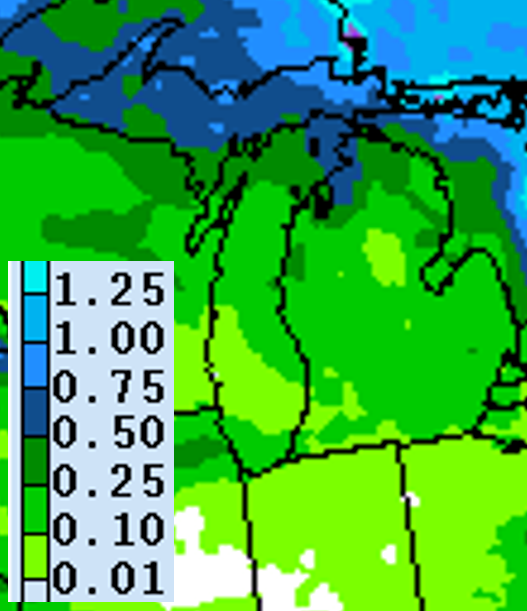
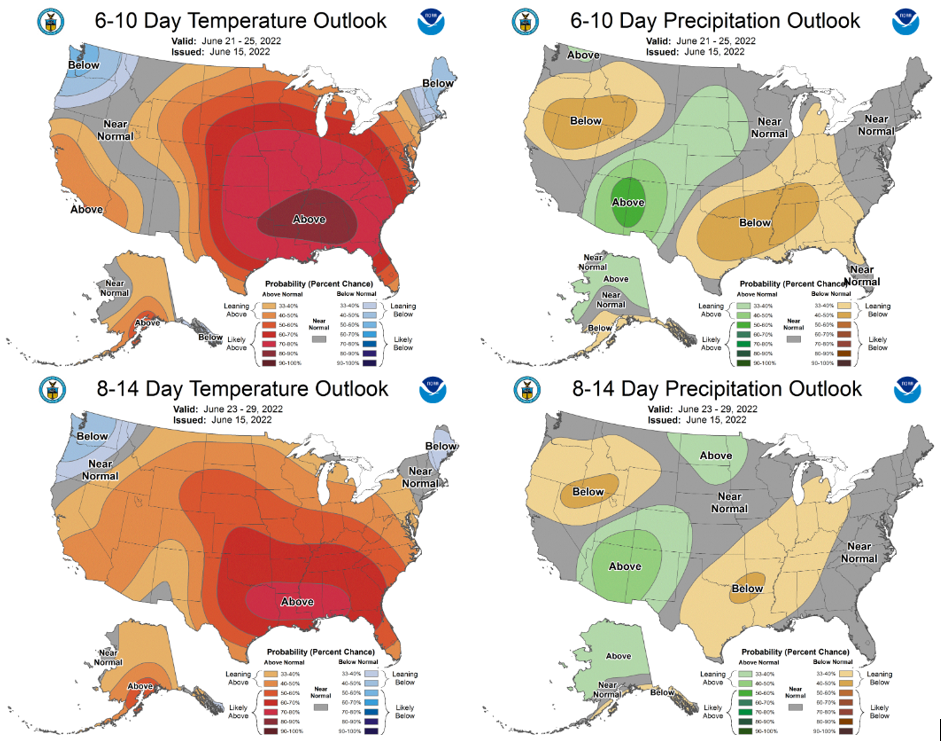
Crops and pests
Wheat in Michigan was rated at 52% good to excellent at the end of last week. The crop is currently at milky ripe (Feekes 11.1, milk-like fluid can be squeezed out of the kernels when crushed) to mealy ripe (Feekes 11.2, material squeezed out of the kernel has a doughy consistency). The risk of head scab continues to be low for southwest Michigan for all but very susceptible wheat varieties. No significant disease or insect pressure has been identified although minor powdery mildew was found in one field visited.
High winds, periods of intense rain downbursts and even hail visited parts of our region Monday night resulting in isolated lodging. This appears to have affected only patches in a minority of fields. Several trees and limbs were down in central St. Joseph County, apparently from winds out of the south, although wheat lodging observed was due to westerly winds. Scout lodged areas in particular for increased disease pressure as they will likely stay wet longer and could result in increased severity of head scab or other diseases. If severe enough, those patches should be harvested last and kept separate from the bulk of the load to avoid risk of dockage due to high DON (also known as vomitoxin) levels.
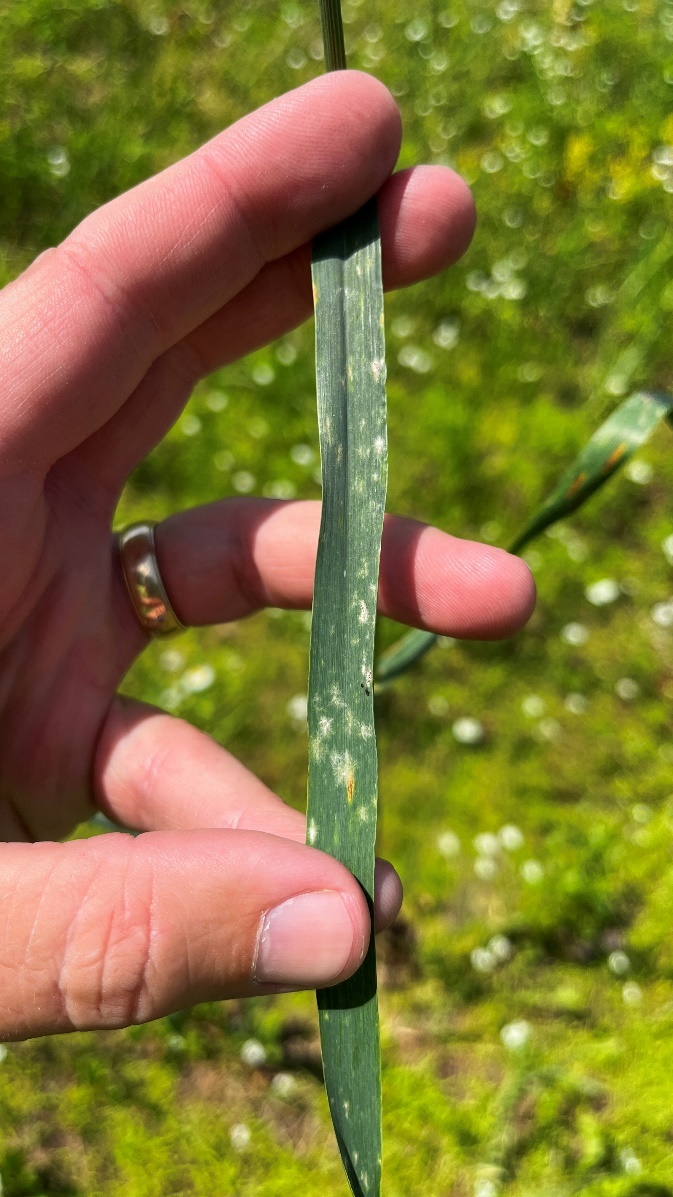
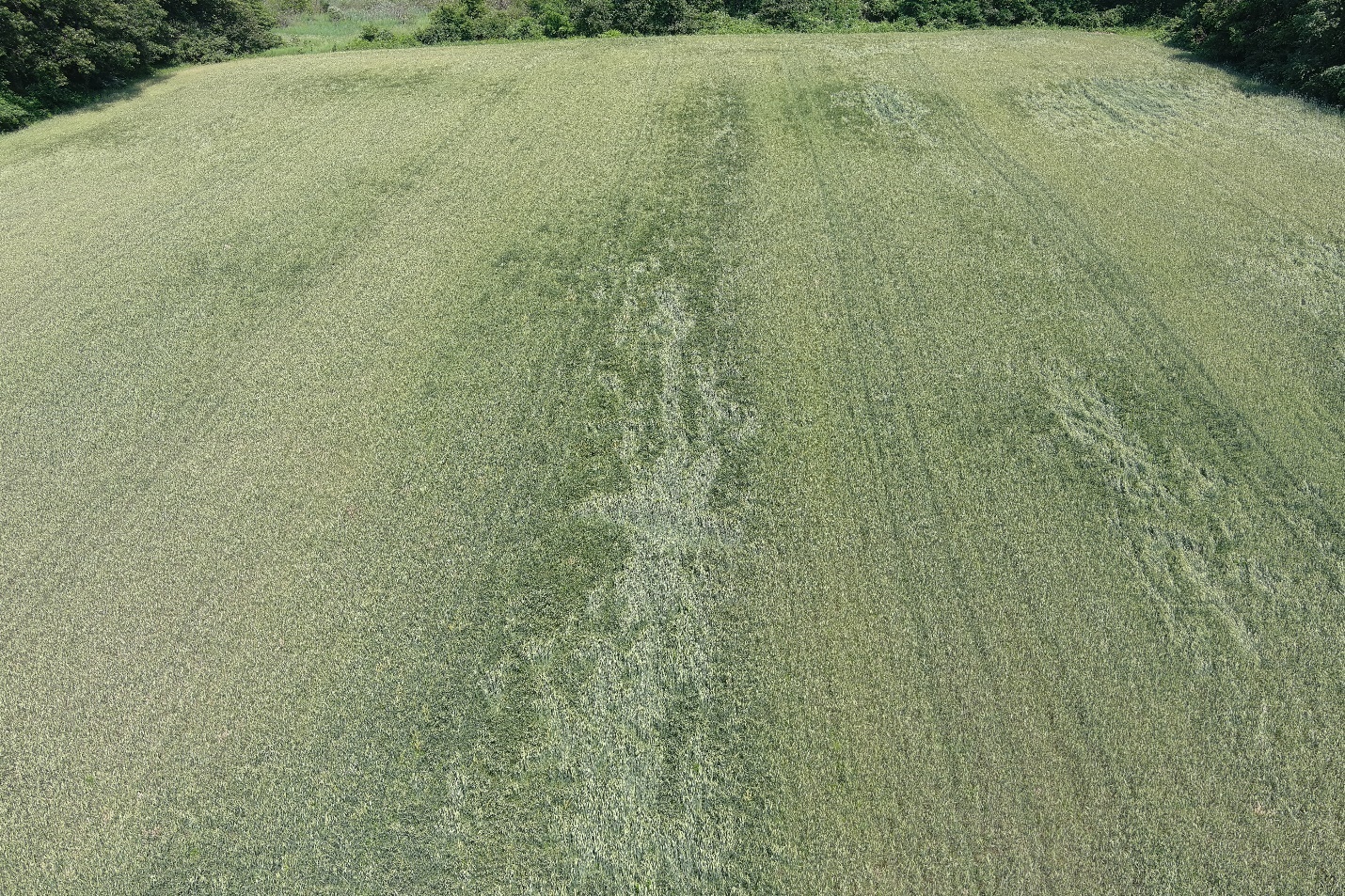
Corn and soybean planting reached 97 and 90% last week, respectively, both of which surpassed the 5-year average. Corn in early-planted fields is nearing knee-high and the first sightings of sidedress equipment were seen this week. Soybean is approaching V4 in some fields with flowers appearing on many plants, so R1 (beginning flowering, at least one flower on any node) will be on top of us quickly with the current high temperatures.
Weeds. As planting season is finishing up and most areas have had significant rain events each week, many growers will be looking for opportunities to make a postemergence herbicide application. Purdue weed specialists wrote a recent article addressing growth stage cutoffs for various herbicides. For example, glufosinate (e.g. Liberty) applications made once flowering begins are off-label. Applications of Engenia, FeXapan, and Xtendimax in Xtend soybeans or Enlist products in Enlist soybeans can be made before R2 (full flowering, an open flower at one of the two uppermost nodes). From that article: “With these flowering soybeans still being small in many areas, it is imperative to include residual herbicides in these postemergence applications to help reduce weed pressure until crop canopy.” Check the product label or refer to the MSU Weed Control Guide for Field Crops (Table 1I for corn, several tables under Remarks and Limitations for soybean). This coming weekend and then again later next week should afford good opportunities to get spray applications made with lower wind speeds and little chance of rain predicted.
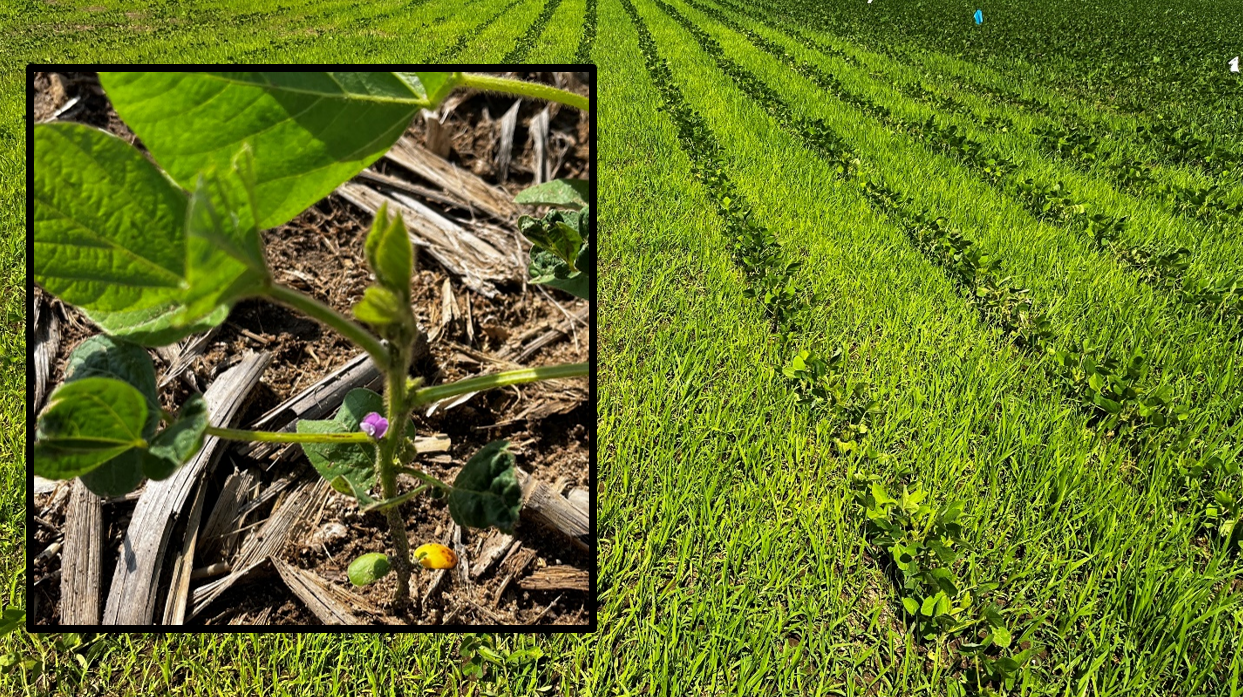
Irrigation
Although timely rains have made irrigation unnecessary in most fields, we are entering the historically hottest and driest time of the year when irrigation is an important tool to augment rainfall, especially on lighter soils. According to current FRET predictions for this coming week: corn at V6 will use 0.75 inch; soybean at R1 will use 1.9 inches; alfalfa at 10% ground shading will use 0.75 inch and at 75% ground shading will use 2.3 inches; and wheat will use 2.1 inches.
According to MSU and Purdue Extension irrigation educator Lyndon Kelley, by late June some irrigated fields of potatoes, alfalfa or small grains have had 3-4 applications of water, but for many producers the irrigation season is just beginning. If you have not had the system running yet, now is the time to make sure the irrigation equipment is in running order. If you ignore irrigation equipment until the day you need to water, it leads to cutting corners and taking risks that can lead to damage and downtime. Check out the article, “Irrigation season: Start with inspections and repairs,” for a list of system inspection and repair tips.
For more information and helpful resources, visit the Biosystems & Agricultural Engineering – Irrigation website. You can also find useful irrigation management tools on the MSU Enviroweather website—hover over Weather and look under Irrigation Tools. You can even sign up to receive free daily texts with rPET data for Enviroweather stations near you. Also, next Thursday morning at 7:00AM on the MSU Extension Field Crops Virtual Breakfast, MSU Extension irrigation specialist Younsuk Dong and irrigation educator Lyndon Kelley will be discussing irrigation topics and answering questions.
How to get the best out of your drainage system
How to get the best out of your drainage system was the topic of this week’s MSU Extension Field Crops Virtual Breakfast with MSU drainage specialist Ehsan Ghane. Dr. Ghane gave attendees a 6-step approach to optimizing a drainage system.
- Step 1: Start with a good design which will mean the difference between a system that works and one that works well. This will require getting some education. One opportunity will be during the MSU Drainage Workshop to be held March 2023.
- Step 2: Ensure the system is installed properly. Ghane explained several key factors, including: installing when the ground is dry to avoid compaction and smearing; avoid dips or humps and use proper connections to avoid potential root clogging which is typically more of an issue with perennial plants than with annual ones; avoid connecting lateral drain pipes to the bottom of the main pipe, maintain minimum grade, and use sock-wrapped or sand-slot pipes to reduce the likelihood of sediment clogging.
- Step 3: Select the right type of pipe. His research showed that efficiency using pipes with 4-row slots was always inferior to using 8-row slots, and using a sock-wrapped pipe increased the effectiveness of both, providing 29% increase in flow rate compared with the unwrapped 4-slot pipe.
- Step 4: Perform maintenance of the system to prevent outlet blockage, repair pipe blowouts, etc.
- Step 5: Improve water infiltration of the soil by avoiding field work during wet conditions (resulting in compaction), adding calcium if there is a mineral imbalance with high sodium and magnesium, and protect the soil surface from raindrop impact with crop residues and cover crops.
- Step 6: Improve soil health to improve soil aggregation and water infiltration.
If you were not able to join the session, the recordings will be closed-captioned and available at the Field Crops Virtual Breakfast webpage and the MSU Extension Field Crops Team social media platforms: Facebook, Spotify, YouTube, Apple Podcasts and Twitter.



 Print
Print Email
Email